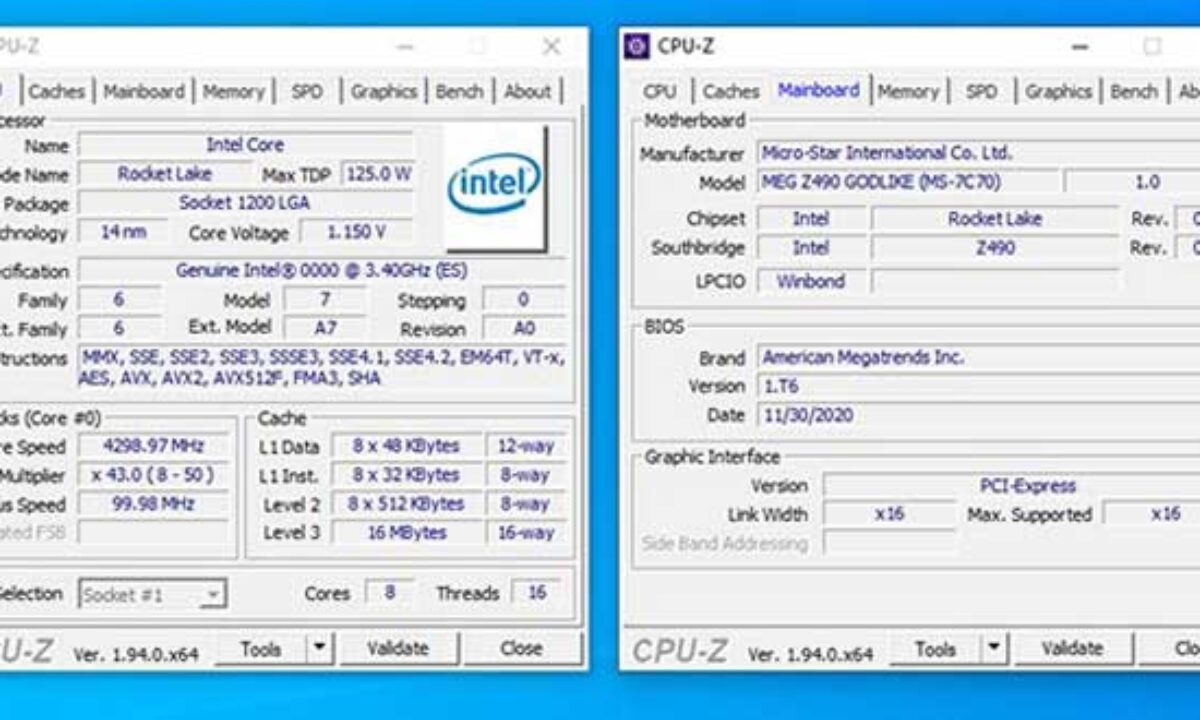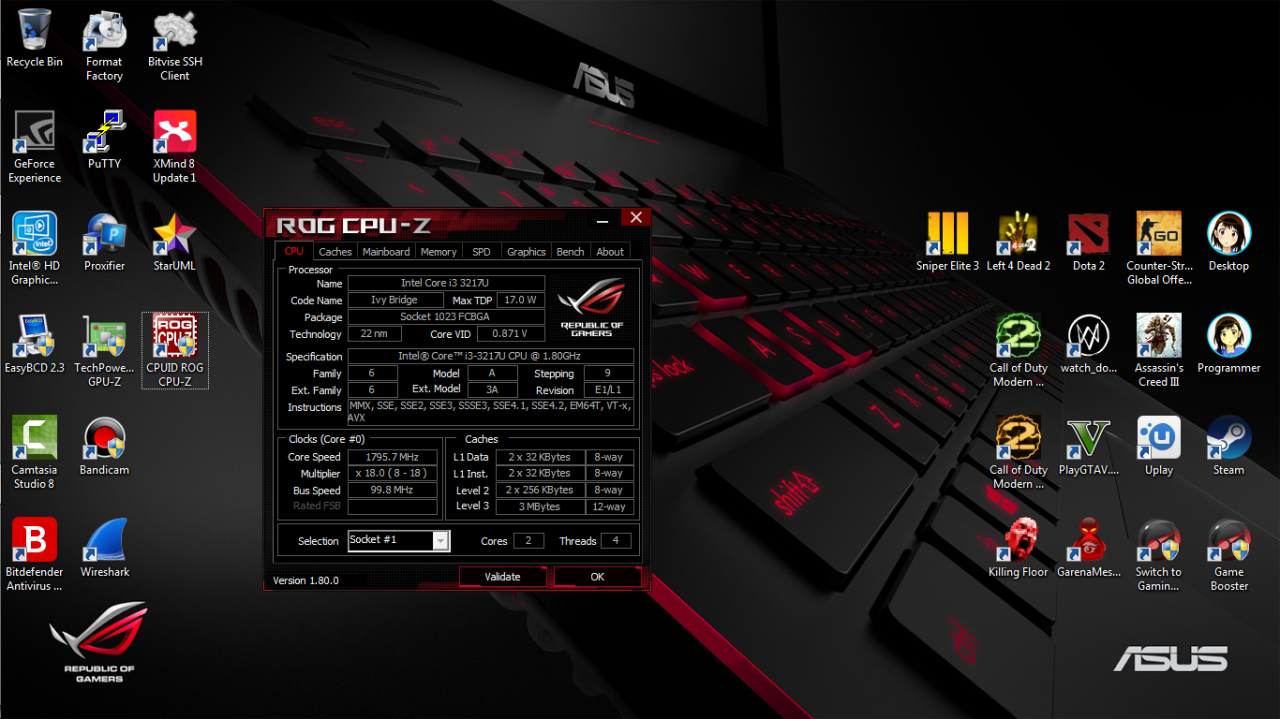Cpu z – CPU-Z: Need to know the nitty-gritty details of your computer’s hardware? This handy utility provides a detailed breakdown of your CPU, RAM, motherboard, and more. From identifying specific components to troubleshooting performance issues, CPU-Z is a must-have tool for anyone who wants to understand their system better, whether you’re a seasoned techie or a curious beginner. This guide will walk you through its features and how to interpret its data.
We’ll cover everything from basic information gathering to using CPU-Z for more advanced tasks like overclocking monitoring. Learn how to interpret the various readings, identify potential problems, and even compare your system’s performance against others. Get ready to dive into the heart of your computer!
CPU-Z: A Deep Dive

CPU-Z is a freeware utility for Windows, macOS, Linux, and Android that provides detailed information about your computer’s hardware components. It’s a widely used tool among tech enthusiasts, system administrators, and even casual users who want a quick and easy way to understand their system’s specs. This guide will explore CPU-Z’s functionality, key features, troubleshooting capabilities, and more.
Introduction to CPU-Z
CPU-Z’s primary function is to identify and display detailed specifications of your computer’s central processing unit (CPU), motherboard, RAM, and graphics card. Originally released in 2002, it has undergone numerous updates, adding support for newer hardware and refining its data presentation. The software has evolved to support a wider range of hardware architectures and operating systems. Users who benefit from CPU-Z include PC builders verifying component compatibility, gamers optimizing their system performance, IT professionals diagnosing hardware issues, and overclockers monitoring system stability.
Key Features and Information Displayed

CPU-Z meticulously identifies and details various hardware components. This includes not only the CPU itself (manufacturer, model, stepping, clock speeds, cache sizes, etc.), but also the motherboard chipset, memory modules (type, size, speed, timings), and graphics card (manufacturer, model, memory, etc.). The information provided is generally very accurate and detailed.
| Category | Data Type | Accuracy | Importance |
|---|---|---|---|
| CPU | Model, Clock Speed, Cache, Core Count, Instructions Set | High | Essential for system identification and performance analysis |
| Motherboard | Manufacturer, Model, Chipset, BIOS Version | High | Crucial for compatibility and troubleshooting |
| Memory | Type, Size, Speed, Timings | High | Important for performance and stability |
| Graphics | Manufacturer, Model, Memory, Clock Speed | High | Essential for gaming and graphics-intensive applications |
Compared to other system information tools, CPU-Z often provides a more comprehensive and detailed view of specific hardware specifications, particularly concerning low-level details of the CPU and motherboard. Tools like Task Manager or System Information offer a broader system overview but lack the depth of CPU-Z’s hardware-specific information.
CPU-Z is a great tool for checking your computer’s specs, right? Knowing your hardware’s capabilities is crucial, especially if you’re thinking about investing in a future tech like drone delivery Canada stock , which could rely on powerful processing for its logistics. After all, understanding your CPU’s performance helps you anticipate how well it will handle the data demands of any emerging tech sector.
Using CPU-Z for Troubleshooting
CPU-Z is invaluable for diagnosing various hardware problems. Its detailed information allows for quick identification of potential issues. For example, if a system is experiencing frequent crashes, CPU-Z can help determine if the CPU is overheating, if the RAM is running at an unstable speed, or if there’s a mismatch between the CPU and motherboard.
- Identify the Problem: Note the symptoms, such as system crashes, freezes, or blue screen errors.
- Open CPU-Z: Launch the application and navigate to the different tabs (CPU, Mainboard, Memory, etc.).
- Analyze the Data: Compare the displayed information with the expected specifications of your components. Look for discrepancies or unusual values. For example, unexpectedly low clock speeds or high temperatures could indicate a problem.
- Cross-Reference: Use the information gathered from CPU-Z to research potential solutions online or consult relevant documentation.
CPU-Z and Overclocking
During overclocking, CPU-Z plays a vital role in monitoring system stability. By tracking key metrics like CPU temperature and voltage, users can assess the impact of overclocking settings on system stability. The software’s real-time monitoring capabilities allow for adjustments to prevent potential damage.
CPU-Z’s display of CPU temperature and voltage changes in real-time is essential for safe and successful overclocking. However, it’s crucial to remember that CPU-Z data alone shouldn’t be the sole basis for overclocking decisions. Other monitoring tools and stress tests are necessary to ensure system stability.
Over-reliance on CPU-Z data for overclocking without considering other factors, like load testing and stress testing, can lead to system instability, component damage, or data corruption.
Interpreting CPU-Z Data, Cpu z
Understanding the significance of various CPU specifications displayed by CPU-Z is crucial for performance analysis. Clock speed determines the processing speed, cache size impacts data access times, and core count influences multitasking capabilities.
- High Clock Speed: Generally indicates faster processing.
- Large Cache Size: Can improve application performance by reducing access times to frequently used data.
- Higher Core Count: Enables better multitasking and parallel processing.
- Lower Voltage: Generally indicates lower power consumption and potentially lower heat generation.
Comparing CPU-Z data from different systems allows for a direct performance comparison. Factors like clock speed, core count, and cache size can be compared to assess relative performance capabilities.
Advanced Features and Usage
CPU-Z offers several less commonly used features, including detailed information about CPU instruction sets and memory timings. These advanced features are valuable for system optimization and detailed hardware analysis. For example, analyzing memory timings can help identify bottlenecks in memory performance.
| Feature | Free Version | Paid Version |
|---|---|---|
| Detailed CPU Information | Yes | Yes (with potentially more detailed information) |
| Motherboard Information | Yes | Yes |
| Memory Information | Yes | Yes |
| Graphics Information | Yes | Yes |
| Advanced Features (e.g., SPD details) | Yes | Potentially more detailed |
Note: CPU-Z is primarily a freeware utility. There is no officially supported paid version; however, some third-party software bundles may include additional features or enhanced functionality.
Visual Representation of CPU-Z Data
CPU-Z primarily presents data in tabular form. However, some data, such as CPU temperature and voltage, can be monitored in real-time, providing a dynamic visual representation of system activity. This real-time data allows for immediate feedback during overclocking or stress testing.
Imagine a scenario where a gamer notices performance drops during a game. Using CPU-Z’s real-time temperature monitoring, they observe that the CPU temperature consistently spikes to near its maximum threshold during intense gameplay. This visual data pinpoints the CPU as a potential performance bottleneck, suggesting the need for improved cooling.
Limitations of CPU-Z

While CPU-Z is a powerful tool, it has limitations. It may not always provide a complete picture of system performance. For example, it doesn’t directly measure performance metrics like frame rates or disk I/O speeds. Also, the accuracy of some information, especially regarding overclocking parameters, may depend on the BIOS and hardware support.
It’s crucial to interpret CPU-Z data in context with other performance metrics and system information. Relying solely on CPU-Z data for performance analysis might lead to incomplete or misleading conclusions. Always consider other factors and use multiple diagnostic tools for a comprehensive assessment.
So you’re checking your CPU specs with CPU-Z, right? That’s a great tool for system diagnostics. If you’re also setting up your printer, you might need to connect to your network; check out this guide for canon ts3420 wifi setup if you’re using a Canon TS3420. Once your printer’s online, you can get back to optimizing your system with CPU-Z and other tools.
Wrap-Up: Cpu Z
Understanding your computer’s hardware is key to optimizing its performance and troubleshooting potential problems. CPU-Z provides a straightforward and powerful way to access this information. Whether you’re a casual user curious about your system’s specs or a seasoned overclocker needing precise monitoring, CPU-Z empowers you with the knowledge to get the most out of your PC. So, download it, explore its features, and start unlocking the potential of your hardware!
Popular Questions
Is CPU-Z safe to use?
Yes, CPU-Z is a safe and reputable program. It’s a read-only utility; it doesn’t modify system settings or install malware.
Does CPU-Z work on all operating systems?
CPU-Z is available for Windows, macOS, Linux, and Android. Check their website for the latest compatible versions.
How often should I use CPU-Z?
You can use it whenever you need hardware information. It’s useful for troubleshooting, monitoring overclocks, or simply checking your system specs.
CPU-Z is great for checking your computer’s specs, but sometimes you need to know about your network too. If you’re using an iPhone and want to see if you’re connected to 2.4GHz or 5GHz Wi-Fi, check out this guide on how to check your wifi ghz on iphone to find out. Knowing your Wi-Fi frequency can help troubleshoot connection issues, just like knowing your CPU details helps with computer performance analysis using CPU-Z.
Can CPU-Z help me choose new hardware components?
Yes, by comparing your current system’s specs with those of potential upgrades, CPU-Z can help you make informed decisions.
